Hi Everyone. Just wanted to wish you all a very Happy St. Patrick’s Day from all The Irish Store Family here in Dublin. Whatever you’re doing today, I hope you’re having fun and catching up and reuniting with friends and family. Hopefully, you’ve planned the outfit, the shamrock is ready and now you can sit back and relax before the festivities. So why not take a trip with me as I explore some of the places and customs associated with Ireland’s patron saint.
1. Wearing The Shamrock
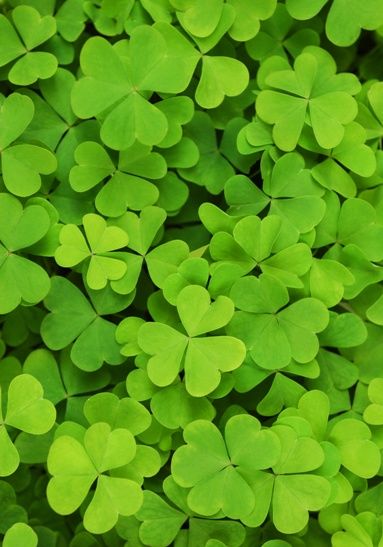
Shamrock will be proudly worn by millions of people all over the world today. Although the harp is Ireland’s official emblem, the shamrock is everyone’s favorite symbol of good fortune and folklore tells us that there’s an ancient connection between the shamrock and St. Patrick himself. The Gaelic word for Shamrock is “seamróg” meaning “summer plant”. Pagan Druids considered the shamrock sacred with its triplet of leaves, 3 is a mystical number. Legend has it that St. Patrick then used the Shamrock to explain the Holy Trinity to would be Christian converts in 5th century Ireland.
2. The Hill of Slane
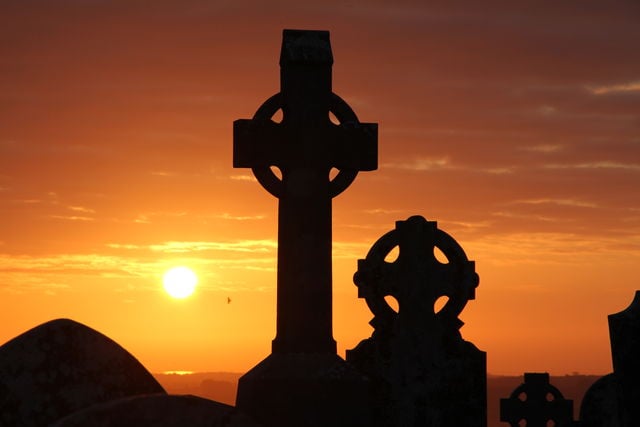
Speaking of Shamrock, we must stop by the hill of Slane in County Meath. It is said that it was on this very hill that St. Patrick taught early Christians the meaning of the Holy Trinity using Ireland’s famous 3 leafed clovers. The Celtic crosses pictured above stand in the cemetery at the top of Slane Hill. The Celtic cross is a truly iconic ancient symbol of Ireland and here lies another connection to St. Patrick. Pagans worshipped the sun and the moon and legend have it that St. Patrick combined their circular symbol with the Christian cross to create the first Celtic Cross as a way of converting the Irish people to Christianity.
3. Slemish Mountain
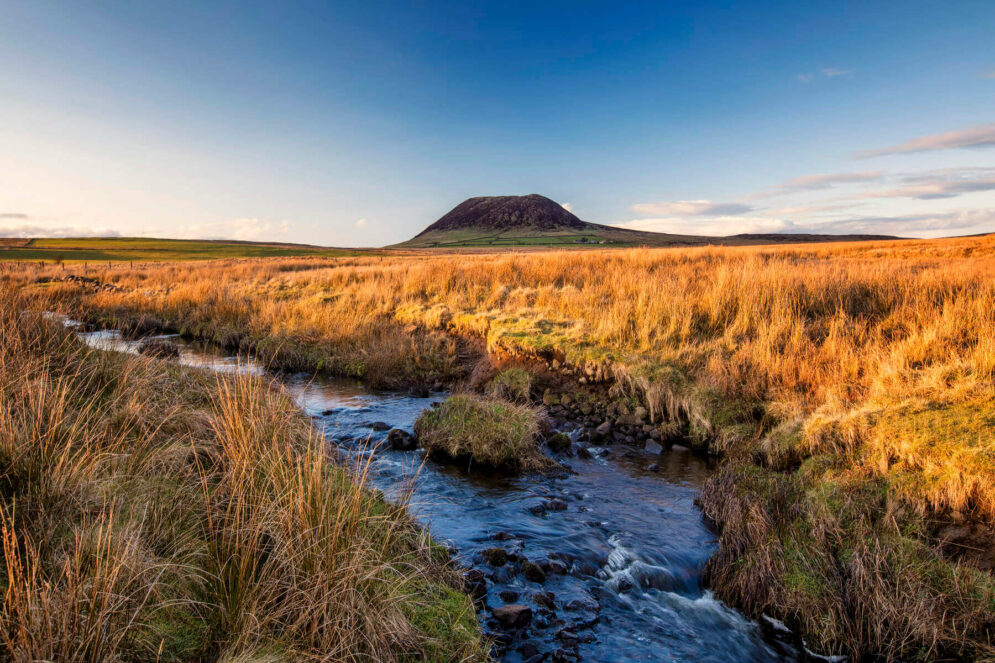
Time to head up north now to Slemish mountain in County Antrim. It is widely documented that St. Patrick wasn’t in fact Irish. Captured in Roman Britain and brought to Ireland as a slave, he spent his first six years in this part of the country working under harsh conditions as a shepherd. It is believed he found his true faith here during this time of extreme hardship. Each year on St.Patrick’s Day people gather to walk to the top of Slemish as a pilgrimage.
4. Croagh Patrick
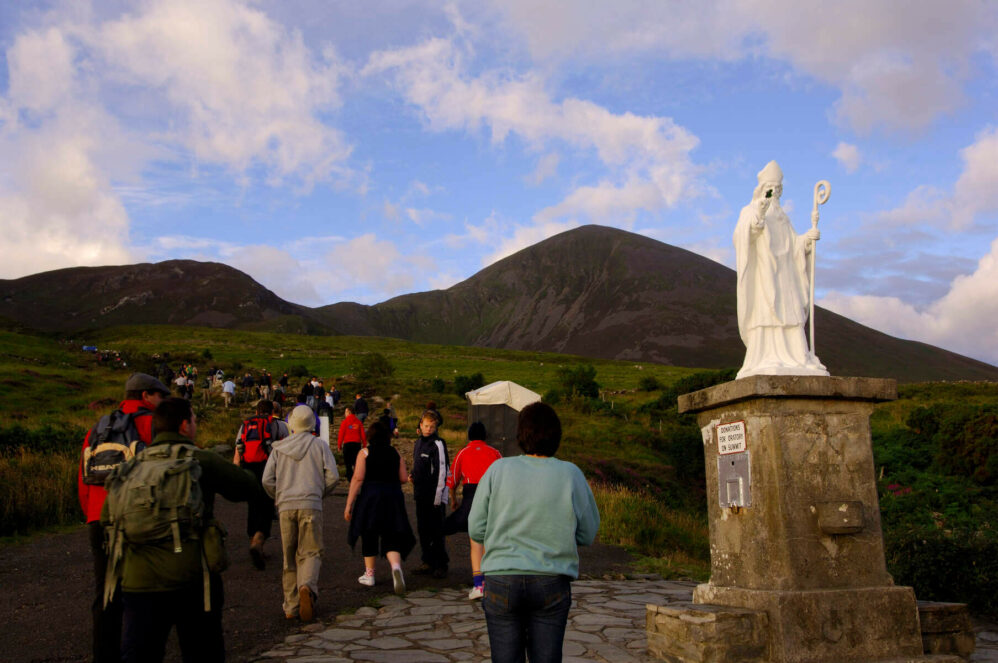
Time to head to the mystical west of the country to the majestic Croagh Patrick overlooking Clew Bay in County Mayo. Legend has it that it was from here that St Patrick banished the snakes from Ireland and fasted for 40 days as penance. To this day, flocks of pilgrims from all over the world gather at the mountain on the last Sunday in July. Some even climb the mountain barefoot to atone for their sins! I’ve climbed this mountain myself, (keeping my shoes firmly on I hasten to add!). It’s about a 2-hour climb and worth every step. The views from the top are breathtaking.
5. St. Patrick’s Day Parades
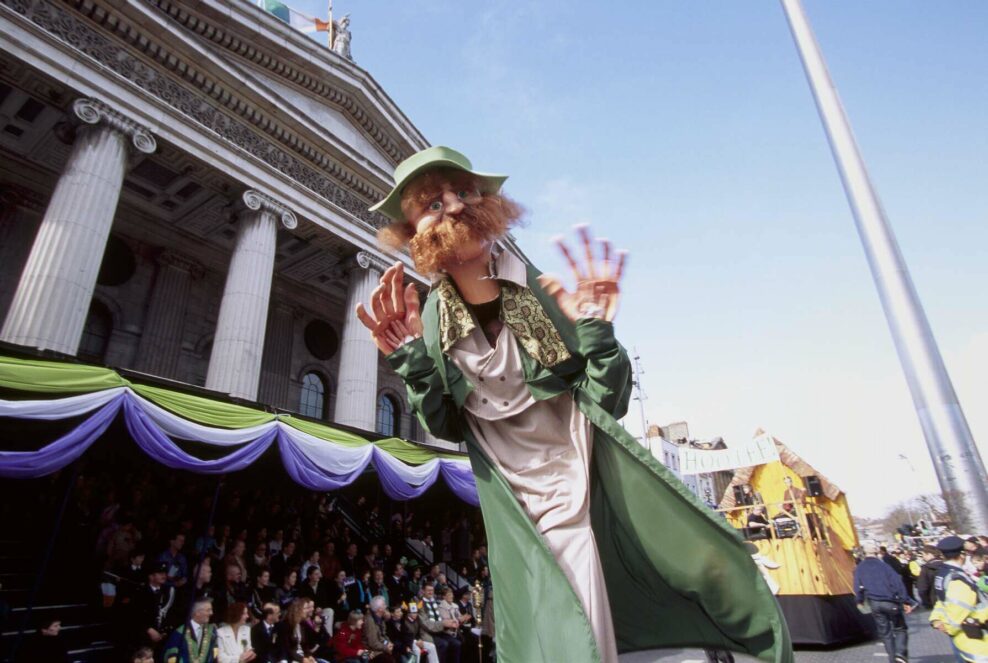
It was the Irish diaspora who first started St. Patrick’s Day parades in the late 18th century, most notably in North America. The first St. Patrick’s Day parade in Ireland took place in Waterford and the first official parade in Dublin took place in 1931. Today, thousands of parades take place worldwide with hundreds of thousands of marchers and spectators attending.
So wherever you are and however you’re marking the occasion, have a wonderful time! If you feel like some festive shopping this weekend then check out our St. Patrick’s Day gifts with 20% off absolutely everything plus free shipping on orders over $69!! Use code PATRICK. The perfect time to save big on our great collection of Aran Sweaters, Celtic Jewelry & Irish Homewares
Happy St. Patrick’s Day!
Take care of yourselves and each other,
Slán go fóill!
Lulu.



12 comments
LuLu, I love reading your stories and it feels like i am visiting Ireland all over again.
my husband and i have been twice it is my happy place certainly.
When we get to Dublin again we will be sure to visit the Irish Store
We wish you continued succes.
Hi Patricia,
How lovely to receive your very kind comment-it means so much!I hope you get to come back and visit us soon.
Thanks so much,
Kind regards,
Lulu.
Thank you! Your posts on Irish history and culture are much appreciated by those of with Irish roots living outside of Ireland. We also enjoy all your fine products!
Hi Paul,
Thanks so much for reading. I’m so glad you’re enjoying the blog and thanks so much for choosing The Irish Store.
Kind regards,
Lulu.
Happy Saint Patrick’s Day to everybody there in Ireland, It’s raining and cold here in Kentucky, but still enjoying the day☘️
Hi Scott,
A very Happy St.Patrick’s Day to you too- hope you had a great day!
Kind regards,
Lulu.
I just LOVE your stories of Ireland, Irish history, and places to visit! Thank you and Happy St. Patrick’e Day to all of you too!
Hi Nancy,
Thank you so much for your lovely feedback-I hope you had a a wonderful St. Patrick’s Day!
Kind regards,
Lulu.
HAPPY ST. PATRICK’S DAY !! 🇨🇮🍻🍀😃
Hi Lisa,
Thanks so much -hope you had a wonderful time!
Kind regards,
Lulu.
I appreciate you taking the time to send this information to me 3 of my grandparents were born in Ireland one day I will get there
Hi Paul,
It’s my absolute pleasure to share stories of Ireland and I’m so delighted you’re enjoying the blog.I hop you get the opportunity to come and visit soon.
Kind regards,
Lulu.